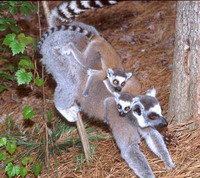Login form
Reproduction
 Do spiders date? Do sponges have parents? Are there boy plants and girl plants? All these questions have to do with reproduction. Every species (kind) of living thing reproduces. Reproduction is how a species survives.
Do spiders date? Do sponges have parents? Are there boy plants and girl plants? All these questions have to do with reproduction. Every species (kind) of living thing reproduces. Reproduction is how a species survives.
Sponges reproduce in simple ways. Spiders, plants, and people reproduce in more complicated ways. But there are just two basic ways of reproducing: by asexual or sexual reproduction.
WHAT IS ASEXUAL REPRODUCTION?
Asexual reproduction means that there are no male and female parents. There is only one parent. All the offspring (new organisms) that develop are just like the parent. They all have the same genes as the parent.
Genes are found in the cells of all living organisms and are passed on to the organism’s offspring. They determine the traits of offspring, such as blue or brown eyes and straight or curly hair in humans.
Sponges reproduce by budding. Bumps called buds form on the body of a sponge. The buds break off and become new sponges. Budding is a form of asexual reproduction.
WHAT IS SEXUAL REPRODUCTION?
Sexual reproduction means that there are two parents. Males have sex cells called sperm. Females have sex cells called eggs. When animals mate, the male sperm fertilize, or join with, the female eggs to form new cells.
Each parent has different genes. The offspring (children) get half of their genes from each parent. Two sets of genes make the offspring different from their parents.
WHAT IS COURTSHIP?
Most animals have a time of courtship before they mate. Human males and females date.
Animals court by instinct. Male birds show off colorful feathers. Frogs croak to get the attention of females. Male and female fireflies flash their lights.
Some male spiders bring a dead fly to a female. The male spider is not really dating the female. He brings a “gift” so the female will not mistake him for dinner and eat him.
HOW DOES A SPERM FERTILIZE AN EGG?
In some animals, the egg gets fertilized outside the female’s body. Frogs, toads, and most female fish lay eggs in the water. Males put their sperm near the floating eggs. The sperm find and fertilize the eggs.
In many other animals, the male deposits its sperm inside the female’s body and the egg gets fertilized there. The female eggs of sharks, wolves, polar bears, and human beings are fertilized inside the female’s body.
Some female animals store sperm in their bodies until they are ready to lay eggs. Spiders and queen bees are animals that store sperm.
HOW DOES A FERTILIZED EGG GROW?
A fertilized egg divides again and again to become an embryo. Embryos grow inside the bodies of female mammals and some other animals. Humans develop as embryos. When an embryo is fully formed, the mother gives birth.
Other animals lay eggs outside their bodies. Alligators, crocodiles, frogs, turtles, fish, and birds are animals that lay eggs. The eggs are protected by a shell. The shell holds food for the growing embryo. Once grown, the babies must break out of their shells.
HOW DO PLANTS REPRODUCE?
Plants can reproduce asexually or sexually. Plants reproduce asexually by growing new parts. You can watch a potato reproduce asexually. Cut a potato into several pieces. Put each piece in a cup. Set the cup in sunlight and give it water. Soon you will see new potato plants growing.
Plants that grow from seeds reproduce sexually. The male and female parts are in the flowers of some plants. The male part is called a stamen. The sperm is called pollen. The female part is called a pistil. The egg grows inside the pistil. Bees, birds, and even the wind carry the pollen to the pistils.
Some plant species have different male and female plants. But in many species, the male and female parts are on the same plant.
Source: Microsoft ® Encarta

